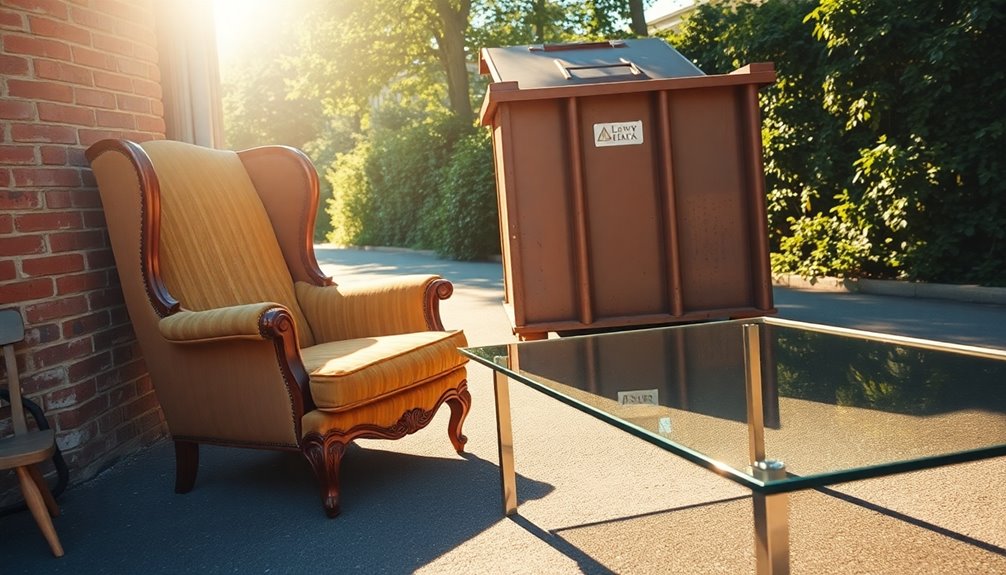You can easily get rid of used furniture through several methods. Start by donating it to local charities like Salvation Army or Goodwill. If you prefer cash, sell it on platforms like eBay or Facebook Marketplace; just ensure to clean and photograph it well. For a hassle-free option, hire a junk removal service to handle heavy items. Alternatively, check your local regulations for curbside pickup options. You might even consider renting a dumpster or taking it to a landfill. There are many eco-friendly disposal techniques available for you. Discover more options that can fit your situation.
Key Takeaways
- Donate usable furniture to local charities like Salvation Army or Goodwill to help those in need and reduce landfill waste.
- Sell furniture online through platforms like Craigslist or Facebook Marketplace, ensuring to provide detailed listings and quality photos.
- Hire junk removal services for a hassle-free option, as professionals manage bulky items and focus on eco-friendly disposal.
- Check local curbside pickup regulations for bulky items, ensuring compliance and maintaining neighborhood aesthetics during disposal.
- Consider renting a roll-off dumpster for extensive cleanouts or disposing of items at a landfill, ensuring to separate recyclable components.
Donating Your Furniture
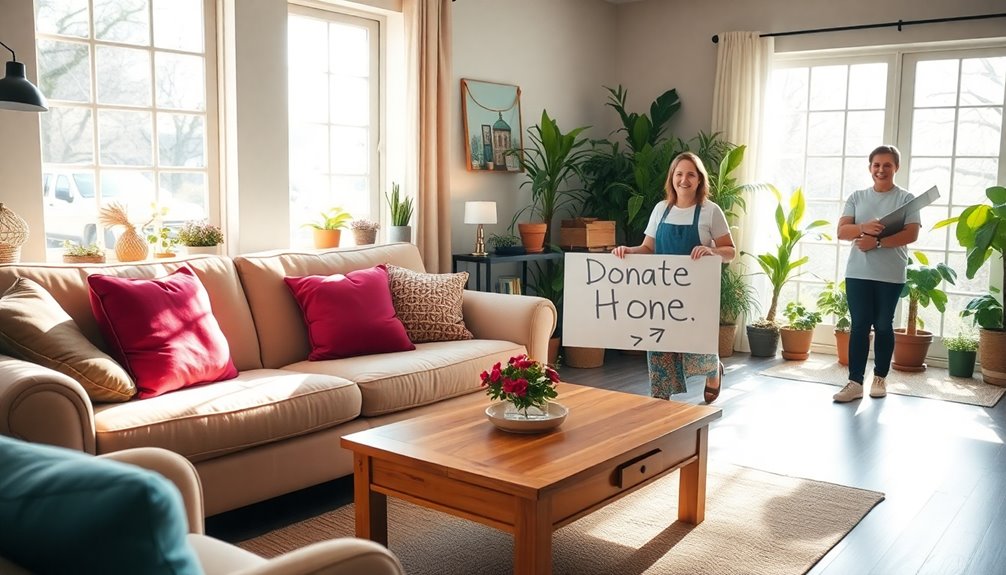
Donating your furniture can be a rewarding way to give back to your community while decluttering your home. Before you donate, assess the condition of your furniture. Check for structural soundness and note any imperfections like stains or tears. Make sure the items are usable in a household setting and meet the acceptance guidelines of your chosen charity.
Next, research local and national charities that accept furniture donations, such as the Salvation Army or Goodwill. Each organization has specific guidelines, so it's essential to identify those that align with your items. Some charities even offer pick-up services, which can simplify the process. Donating your furniture not only reduces landfill waste but also provides comfort to individuals and families in need.
Once you’ve chosen a charity, prepare your furniture for donation. Clean it thoroughly, make minor repairs, and polish wood surfaces to enhance its appearance. Protect larger items during transport to prevent damage. Consider including any accessories or decorations that might complement the furniture, as this can increase its appeal to potential recipients. If you’re looking to upgrade your space, explore ecofriendly furniture options in nordic style that not only enhance your home but also align with sustainable living practices. Finally, reach out to the charity for any specific guidelines they may have regarding what can and cannot be accepted for donation.
Finally, schedule a convenient time for drop-off or pick-up. Don't forget to obtain a donation receipt for tax purposes. Keeping records of your donation, including photos and descriptions, will help you track your charitable contributions and their impact on the community.
Selling Furniture Online
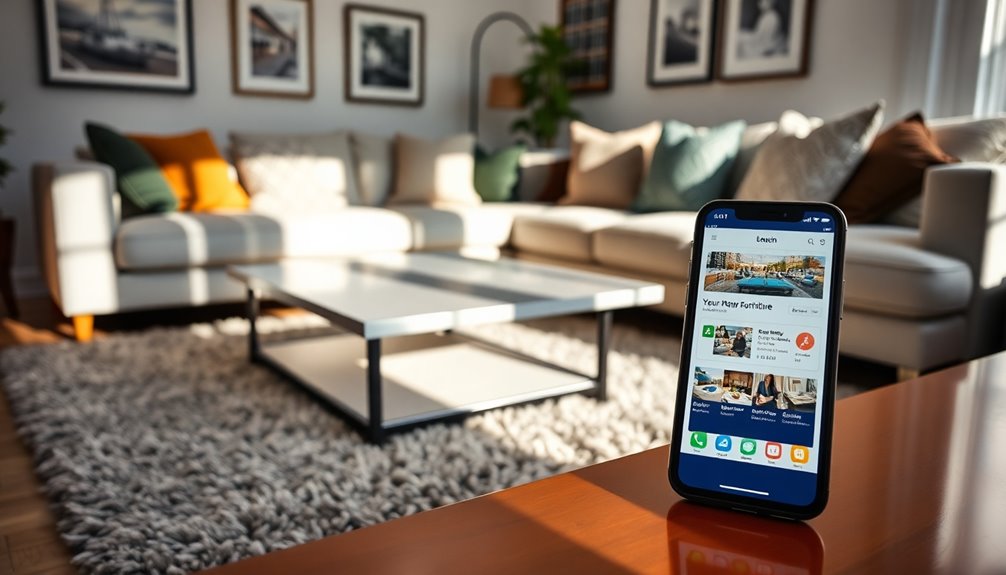
Selling furniture online can be a straightforward way to make extra cash while clearing out your space. Start by choosing the right platform. Online marketplaces like eBay and Craigslist offer easy access, while specialized sites like Chairish cater to vintage items. Social media platforms, such as Facebook Marketplace, allow you to reach local buyers for free.
Before listing, assess your furniture's condition. Make minor repairs, clean thoroughly, and take high-quality photos from multiple angles. Clear images can significantly boost interest. When pricing, research similar items to set a competitive range—usually 50-70% of the original price. Be open to negotiation, and establish a minimum price you're comfortable with. Additionally, consider using Ecwid's shipping options to simplify the logistics of delivering your sold items.
When creating your listing, include detailed descriptions that highlight the furniture's condition, brand, and age. Consider shipping options if you're selling online, as many platforms can help with shipping labels and costs. Don't forget to sync your listings across multiple platforms for broader visibility. Engage honestly with potential buyers; proactive communication can lead to quicker sales. With the right approach, you'll turn your used furniture into cash in no time!
Hiring Junk Removal Services
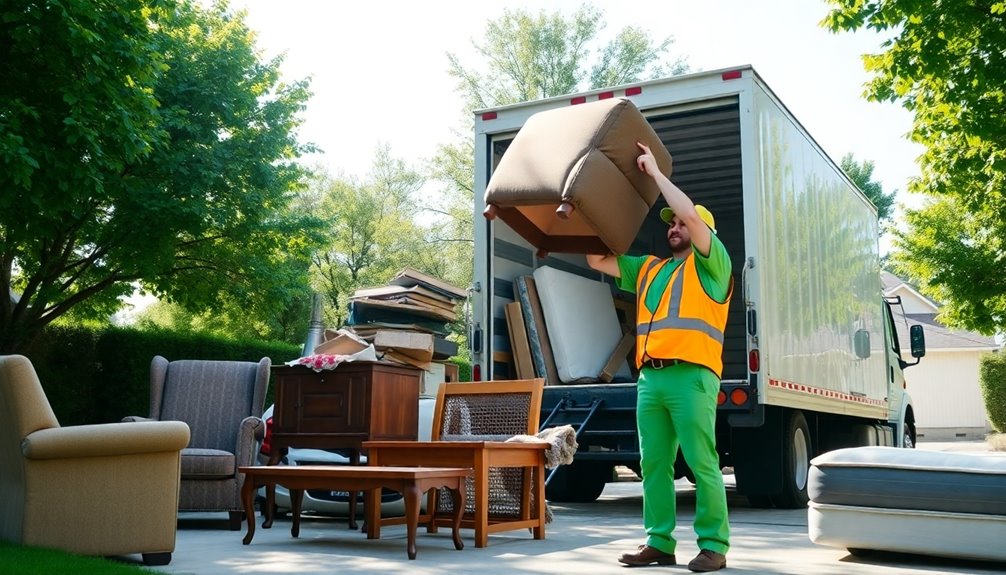
How can you efficiently get rid of unwanted furniture without the hassle of heavy lifting? Hiring junk removal services is a smart choice. These professionals handle everything from couches and chairs to bulky items like bed frames and dining tables. They even assist with carpet removal, making the process seamless for you. Additionally, they use specialized junk removal trucks that ensure efficient disposal of your items.
When you hire a junk removal team, you're opting for a stress-free solution. Trained and background-checked staff ensure safe and proper removal of your old furniture. Plus, most services provide advance notification, so you'll know exactly when to expect them. You can get on-site estimates based on the volume of junk, ensuring you won't face unexpected charges.
Pricing typically ranges from $250 to $300 for a few items, but be mindful that additional pieces may increase the cost. Many companies offer online pricing estimators for quick quotes, and you may even find discounts through memberships.
The best part? These services often focus on eco-friendly disposal options, donating usable items to charities and recycling whenever possible. That way, you can declutter while also contributing positively to your community.
Renting a Roll Off Dumpster
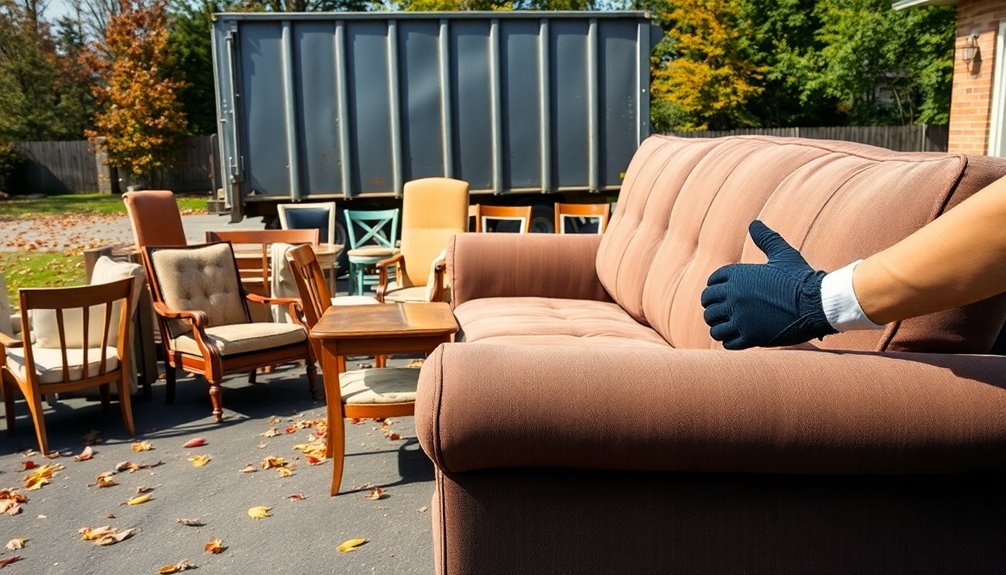
Renting a roll-off dumpster is an excellent way to tackle your unwanted furniture without the physical strain of heavy lifting. Depending on your needs, you can choose from various sizes. A 10-yard dumpster holds about three pickup truck loads, perfect for small cleanouts. If you have slightly larger items, a 15-yard dumpster can manage around 4.5 truck loads. For medium-sized furniture or remodeling projects, a 20-yard dumpster holds about six truck loads, while a 30-yard dumpster is ideal for extensive cleanouts, accommodating up to nine truck loads. Flat-rate pricing ensures you have predictable costs throughout your project.
Costs vary, with a 10-yard dumpster averaging around $410 and a 20-yard dumpster costing about $472. The rental process is straightforward, featuring fast drop-off and pick-up services. You can even arrange online quotes and schedule pickups at your convenience.
Disposing at a Landfill
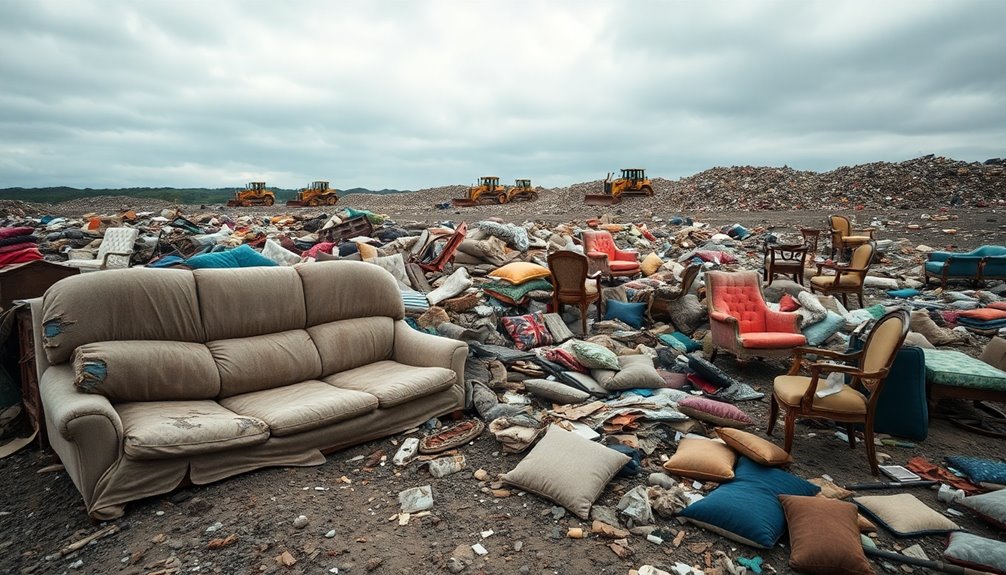
If you prefer to handle furniture disposal yourself, taking your items to a landfill can be a straightforward option. Start by contacting your local landfill to confirm they accept the type of furniture you have. Make sure to check their operating hours and any specific regulations they may have. You should also find out if there are any fees associated with disposal.
When preparing your furniture for transport, ensure it's secured properly. Covering your load can help prevent items from falling out during transit. Comply with local guidelines, and separate any recyclable components from the furniture before disposal. Some landfills have designated areas for furniture, so familiarize yourself with those spots upon arrival. It is also important to note that professional junk removal services can assist with heavy lifting and responsible disposal for large items.
Keep in mind that large furniture items can significantly contribute to landfill overflow, which strains the environment. Proper disposal not only minimizes this impact but also helps maintain landfill health. If your furniture is still in good condition, consider donating it or recycling metal components instead. By exploring these alternatives, you can help reduce waste and support local organizations.
Leaving It on the Curb
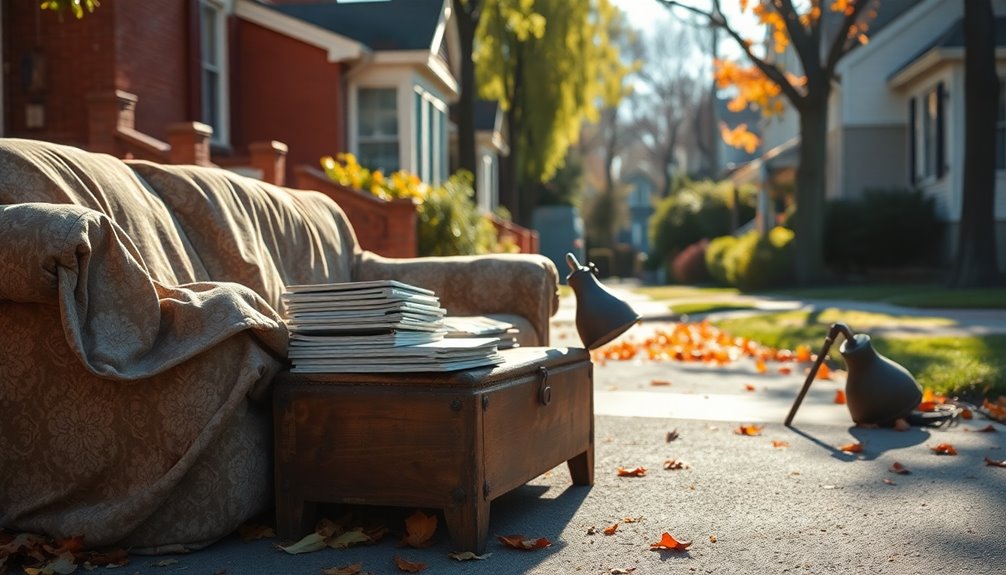
Leaving used furniture on the curb can be an effective way to get rid of it quickly, but it's important to understand the local regulations first. While there's no direct law against placing items on the curb, property and criminal laws apply if they're considered abandoned. You can legally leave items with a "free" sign, but check for homeowner association rules or community guidelines that might restrict such practices.
Before you proceed, contact your local garbage collection services to learn their policies on bulky item pickups. Some cities only offer these services monthly or a few times a year, and they may charge extra for larger items like mattresses. Smaller items are more likely to be picked up than heavy furniture, so arrange everything neatly and mark it clearly as "free."
Only place items on the curb that you believe have value to others to avoid leaving unwanted debris behind. Keep in mind the aesthetic impact on your neighborhood, as maintaining good relations with neighbors is crucial. Good neighbor etiquette suggests being mindful of local sentiments regarding curbside items. If your items aren't taken, have a backup plan for disposal on garbage day.
Preparing Furniture for Disposal
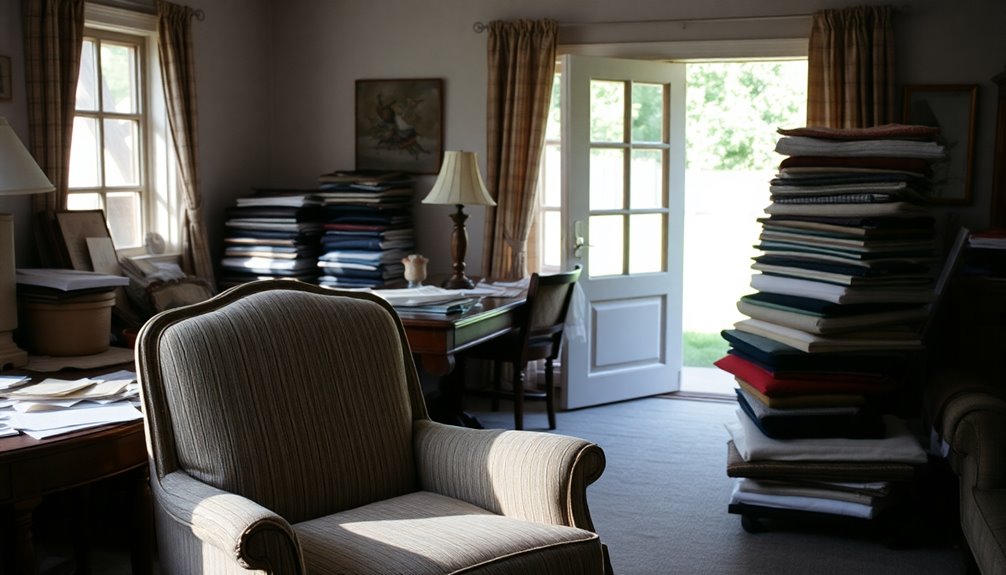
Preparing furniture for disposal involves a few key steps to ensure it's handled properly and responsibly. First, if you're recycling the furniture, disassemble it to remove non-recyclable components like screws, nails, and plastic parts. If your piece has multiple materials, separate them for effective recycling. Clean all surfaces thoroughly to eliminate any residues that might interfere with the recycling process. Additionally, consider that recycling prevents waste and contributes to sustainable practices.
If you plan to donate the furniture, make sure it's in good condition—charities often won't accept items with loose springs or broken legs. Clean the furniture to make it presentable, and call the donation center in advance to schedule a pickup or confirm drop-off requirements.
For curbside pickup, empty any drawers or compartments before placing the furniture outside. Disassemble larger pieces if possible to make them easier to handle. Always confirm with your waste collection service about collection details and any additional preparations needed. Lastly, if you're hiring a professional removal service, disassemble the furniture and gather necessary tools like screwdrivers and pliers. Protect each part with blankets or bubble wrap to prevent damage during transportation.
Understanding Local Regulations
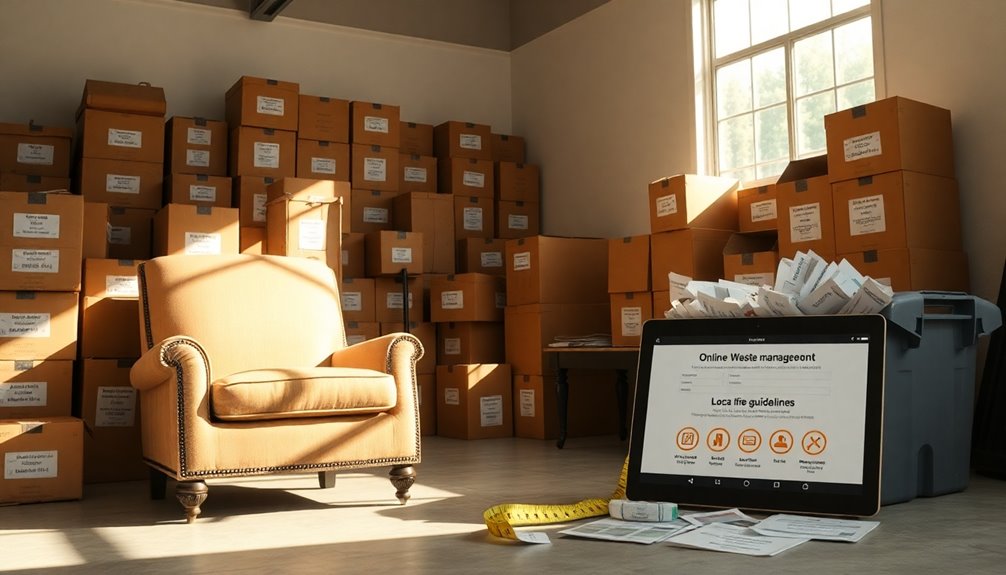
When disposing of used furniture, it's crucial to understand local regulations that can vary significantly by location. Different areas have specific guidelines, so you'll need to check the rules for your province, municipality, or city. Many municipalities offer curbside pickup for bulk items, including furniture, but schedules and requirements can differ. Some places require advance scheduling or may charge fees for this service.
Make sure you know designated days for bulk item collection, as you'll need to place your furniture in specified areas like the curb or alley. Keep in mind that limits often exist on how many items you can dispose of in one collection, such as a maximum of ten items in New York City. Be careful not to obstruct pedestrian traffic or place items on private property.
If you're taking furniture to a landfill, you must comply with regulations designed to minimize environmental impact. This includes securing your load and using designated disposal areas. Additionally, items with hazardous materials, like electronics, require special handling. Always consult local authorities for detailed information to ensure you follow the correct procedures. Responsible disposal supports community health and sustainability, making it essential to adhere to these regulations.
Frequently Asked Questions
Can I Donate Furniture With Minor Damages?
Yes, you can donate furniture with minor damages, as long as it's still functional. Many charities accept items with small imperfections, but you should check their specific guidelines first. Look for organizations that specialize in furniture donations, and don't hesitate to contact them directly. Just make sure to clean and prepare the furniture before donating, so it looks its best and meets any health regulations they might have in place.
How Do I Choose the Right Junk Removal Service?
To choose the right junk removal service, start by verifying the company's credibility and experience. Check online reviews and ratings to gauge reliability. Ensure they're licensed and insured, complying with local regulations. Evaluate their services and pricing for transparency. Look for a company committed to environmentally friendly practices, like recycling and donating items. Finally, assess their safety measures, especially when handling heavy or hazardous materials, to ensure a secure removal process.
Are There Tax Benefits for Donating Used Furniture?
Yes, there are tax benefits for donating used furniture. When you donate to a qualified organization, you can deduct the fair market value of the items from your taxes. Just make sure your furniture's in good condition and keep a receipt from the charity. If your donation exceeds $500, you'll need to fill out Form 8283. Donating not only helps you save on taxes but also supports those in need in your community.
What Happens to Donated Furniture After Pickup?
After your furniture's picked up, it goes to a donation center where the staff inspects and sorts it. They'll label the items with their dimensions and condition, and might do minor repairs or cleaning. Next, the furniture's priced and displayed for sale. Proceeds from these sales help fund community programs, while some items are directly given to families in need. This process not only supports others but also helps reduce waste in landfills.
How Can I Safely Transport Furniture to a Landfill?
To safely transport furniture to a landfill, start by taping drawers and doors shut to prevent them from opening. Cover sharp corners to protect surfaces, and disassemble larger pieces for easier handling. Measure both the furniture and your vehicle to ensure a secure fit. Clear any obstacles along your path, and use proper lifting techniques—lift with your legs and keep the furniture close to your body. Finally, confirm landfill guidelines before you go.
Conclusion
Getting rid of used furniture doesn't have to be a hassle. Whether you choose to donate, sell, or hire a removal service, there are plenty of options that suit your needs. Just remember to prepare your items properly and understand local regulations to avoid any surprises. By taking the right steps, you can clear out your space efficiently while helping others or making a little cash. So, pick the method that works best for you and get started!
